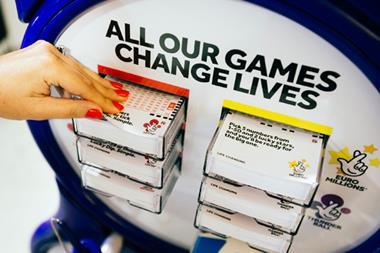The pre-packaged cheese display in store tends to be uninspiring and functional.
While some segmentation exists, for example cheddars displayed ranged from mild to mature, there is little extra guidance unless the customer reads the packaging.
Even the grab-and-go shoppers interviewed had to check they had picked up their desired choice by reading the label.
Yet, unlike some categories we have researched, temptation can play a role in drawing shoppers into the display.
Of the 12% of shoppers who had not intended to make a purchase but did, it was the sight of something tempting that made them buy. “Just saw it and fancied it” and “Like it, I’m weak-willed” were some of the comments.
Given there is little point of purchase (PoP) material it suggests there would be a good opportunity to drive more sales through clearer segmentation and appropriate, and evocative, PoP advertising.
Traditional hard cheeses and Continental cheeses were the focus of the study which excluded processed cheeses, cottage and cream cheese and children’s products.
A quarter of shoppers who had intended to buy walked away without a product. The reasons were varied but included “wanted a particular cheddar” and “always have a look but think I have enough to last”.
Very few people visited the cheese aisle with no intention to buy. Virtually all the shoppers we observed bought some cheese.
The opportunities therefore lie in developing incremental sales and encouraging trial of new products among existing buyers. Nearly six in 10 shoppers bought own label exclusively. But over half the shoppers varied products or brands. They appeared to want choice and to have a reasonable repertoire of brands and types of cheeses, driven by usage occasions.
Even though they knew the type of cheese they wanted, some shoppers had a good look round to see what other varieties or brands were available and packaging played an important role here.
Nearly a fifth of shoppers bought cheese for cooking while 16% were stocking up. Only 5% said they bought a product because it was the cheapest and 3% because it was on special offer. Eight per cent were buying for a treat.
The shops visited also had a deli counter and 42% of shoppers interviewed had visited the deli but not made a purchase before coming to the pre-packaged display.
Over half had no intention of visiting the deli while 4% had visited and bought from the deli before coming to the display.
A quarter said they sometimes bought from the deli while 29% said they never used the counter.
Queuing was one of the main reasons for no longer shopping at the deli counter, plus the fact that pre-packaged cheeses gave shoppers a use-by date.
However, shoppers did like the idea of being able to sample cheeses and try new flavours at the counter.
Staff at the deli were expected to display knowledge of their cheeses and be able to make recommendations.
While some segmentation exists, for example cheddars displayed ranged from mild to mature, there is little extra guidance unless the customer reads the packaging.
Even the grab-and-go shoppers interviewed had to check they had picked up their desired choice by reading the label.
Yet, unlike some categories we have researched, temptation can play a role in drawing shoppers into the display.
Of the 12% of shoppers who had not intended to make a purchase but did, it was the sight of something tempting that made them buy. “Just saw it and fancied it” and “Like it, I’m weak-willed” were some of the comments.
Given there is little point of purchase (PoP) material it suggests there would be a good opportunity to drive more sales through clearer segmentation and appropriate, and evocative, PoP advertising.
Traditional hard cheeses and Continental cheeses were the focus of the study which excluded processed cheeses, cottage and cream cheese and children’s products.
A quarter of shoppers who had intended to buy walked away without a product. The reasons were varied but included “wanted a particular cheddar” and “always have a look but think I have enough to last”.
Very few people visited the cheese aisle with no intention to buy. Virtually all the shoppers we observed bought some cheese.
The opportunities therefore lie in developing incremental sales and encouraging trial of new products among existing buyers. Nearly six in 10 shoppers bought own label exclusively. But over half the shoppers varied products or brands. They appeared to want choice and to have a reasonable repertoire of brands and types of cheeses, driven by usage occasions.
Even though they knew the type of cheese they wanted, some shoppers had a good look round to see what other varieties or brands were available and packaging played an important role here.
Nearly a fifth of shoppers bought cheese for cooking while 16% were stocking up. Only 5% said they bought a product because it was the cheapest and 3% because it was on special offer. Eight per cent were buying for a treat.
The shops visited also had a deli counter and 42% of shoppers interviewed had visited the deli but not made a purchase before coming to the pre-packaged display.
Over half had no intention of visiting the deli while 4% had visited and bought from the deli before coming to the display.
A quarter said they sometimes bought from the deli while 29% said they never used the counter.
Queuing was one of the main reasons for no longer shopping at the deli counter, plus the fact that pre-packaged cheeses gave shoppers a use-by date.
However, shoppers did like the idea of being able to sample cheeses and try new flavours at the counter.
Staff at the deli were expected to display knowledge of their cheeses and be able to make recommendations.


















No comments yet